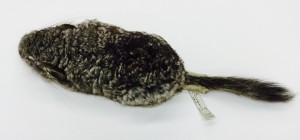Do domestic species have a place in natural history museums? They can certainly be used for showing evolutionary relationships and morphological changes in a species over time. As a teaching collection, the tetrapods collection has several examples of domestic breeds of birds and mammals that we use for educational purposes. Our domestic specimens demonstrate that they were bred for food, companionship, or work. Following Monday’s post about domestic species, we here show some of our collection’s examples of domestics. Take a guess what each species was bred for!
Birds
We have over 40 domestic bird specimens in the collection. Some are very colorful, have extravagant tails, were captive bred birds, and all derived from an ancestral species which still exist today. From pet birds to fancy breed poultry, the domestics capture attention during collection tours.
- Onagadori Chickens only molt every three years which allow them to grow tails that can get 12-27 feet long!
- This bill of a domestic duck indicates clearly how they are descendants of Mallards who have the same bill shape.
- Artificial selection by peafowl breeders have created some of the unique coloring we see in captive raised peacocks. Most captive peafowl look similar to their ancestors.
Mammals
We have 35 domestic mammal specimens in the collection. For most of our domestic mammal species you can find a living example by going to your local pet store. From small domestic rodents to large cattle we can see great examples of different breeding purposes.
- The origin of domestic dogs is still not fully resolved, but it is suspected that they are one of the oldest domesticated animals.
- Through analysis of horse DNA, it has been found that different lines of horses had been domesticated in several areas of Europe.
- Chinchillas in the wild have been critically endangered since 2011. Though pet Chinchillas are becoming common, the only known wild populations of Chinchillas are found in Chile.
- Abyssinian Cavy (Guinea Pig) is actually one of the oldest breeds of domestic guinea pigs. Guinea pigs originated from the Andes in South America from a species called Montane Guinea Pig.
Don’t forget to check out our latest domestic specimen, “Afroduck“, at the Open House this year. See if you can guess the purpose of its breed and find similarities with its ancestral species, the Mallard.
About the Author: Stephanie Malinich is the Collection Manager for the Tetrapod Collection.






